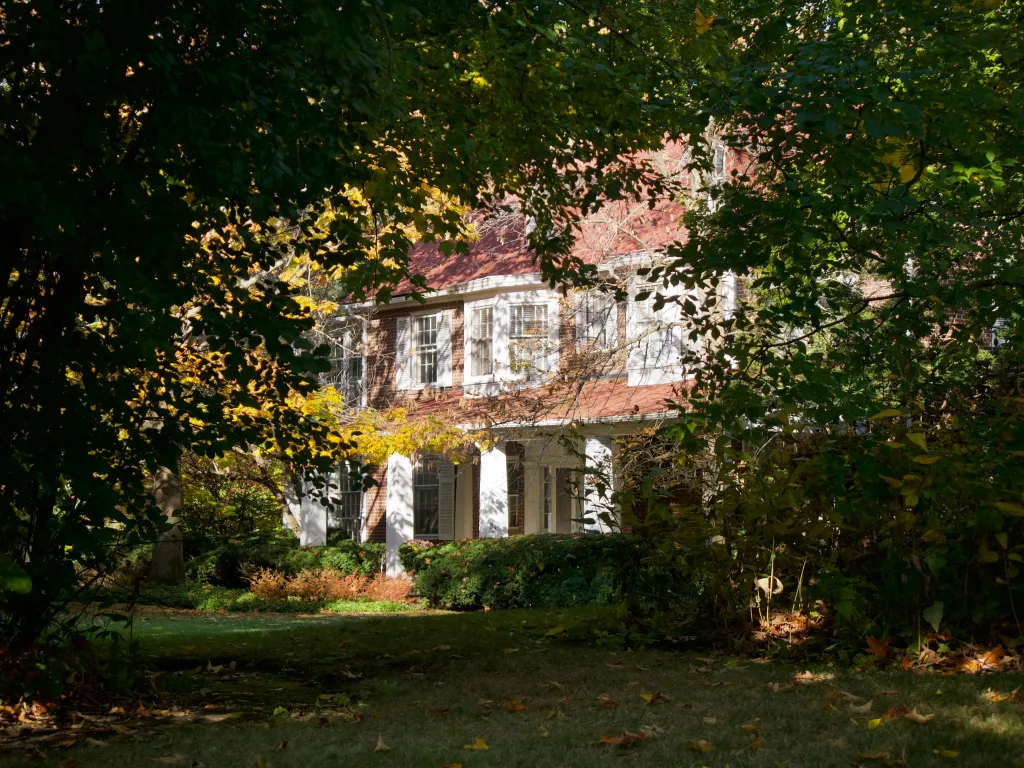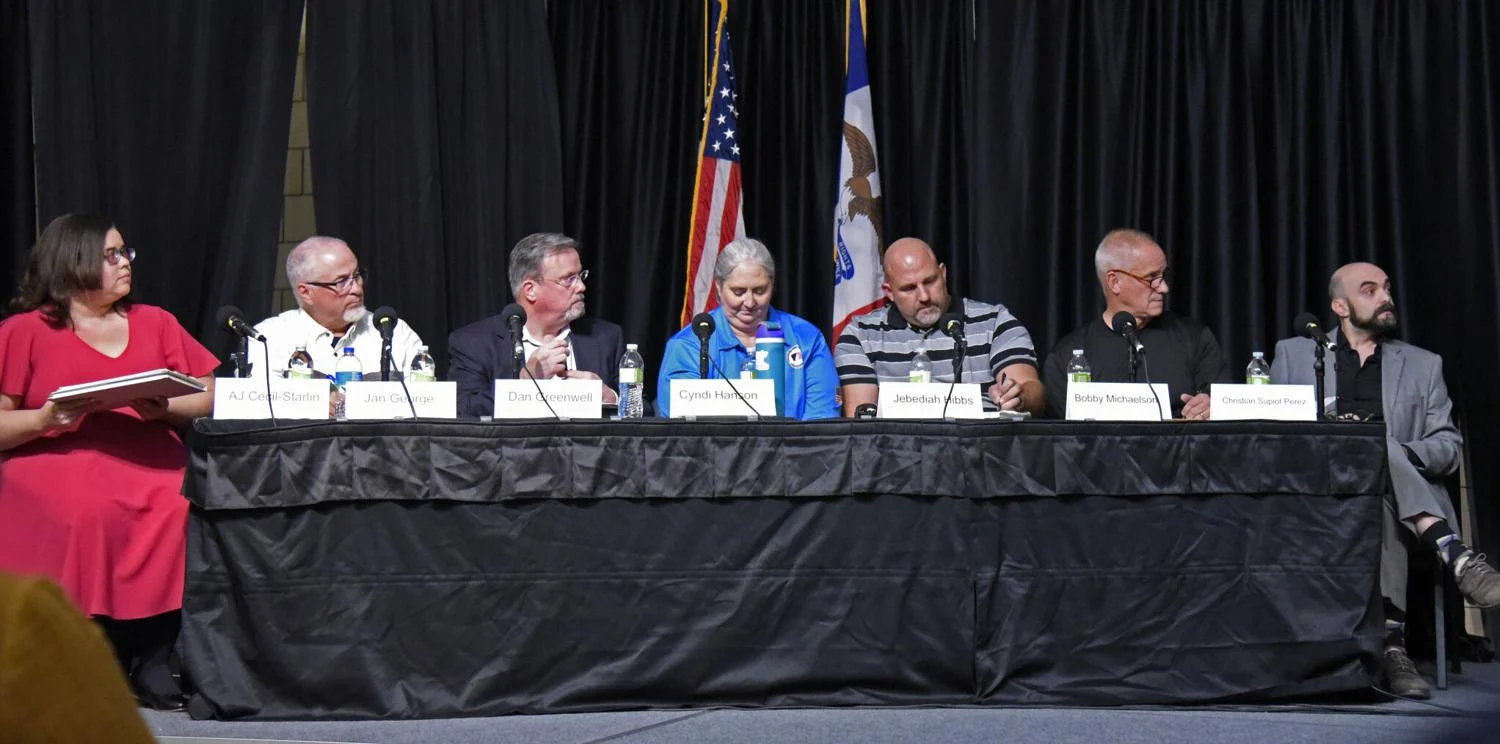Copyright Chicago Tribune

Walking along Prospect Avenue near Lake Michigan in Highland Park, you’ll pass by a break in the shrubbery and see a picturesque brick house peaking out from a small grove of trees. It’s the Smith House, built in 1909 in the colonial revival style by Chicago architect Howard Van Doren Shaw, a prominent figure in the American Craftsman movement. But you’ll also spot a green sign with bold white letters along the sidewalk saying “DEMOLITION PENDING.” The looming demolition of the house at 175 Prospect Avenue sparked concern earlier this year in the hearts of local historical architecture enthusiasts and experts, but an attempt to save it went sideways, instead ending with the City Council voting to — as some advocates see it — declaw the Highland Park Preservation Commission, which plays a key role in landmarking homes and creating historic districts. Some have expressed concerns with how quickly the change moved forward, and fear the historic character of the community could be at stake, as the city finds itself with few tools available to protect historic houses. Attempts to get comments from members of the City Council and Historical Preservation Commission were unsuccessful. Preserving history Concerned residents include Bill Levy, someone with a personal connection to local historical architecture — he and his partner bought, restored and live in the Mary M. W. Adams House, one of three Frank Lloyd Wright houses in Highland Park. Levy recalled first seeing the house in a “state of horrible disrepair.” After some initial hesitation, he and his now husband bought the house in 2010. What followed was 18 months of “thoughtful and careful restoration.” Walking through each room of the historic home, he talked at length about the work they did, the experts they reached out to, and the changes the house has seen in its 120-year life. “We saved that home from the wrecking ball,” Levy said. Today, the couple is heavily involved in the world of historic architecture, including several organizations dedicated to Frank Lloyd Wright architecture, and Levy is a former member of the Highland Park Historic Preservation Commission. “We think awareness and education are very, very important aspects of preservation,” he said. Historic architecture tells the story of the community, he argued, is important to community members and should be supported by local government. Highland Park’s controversy began with an application for a demolition permit in February from the owners of 175 Prospect Ave. The following month, the Preservation Commission determined the house met several criteria required to be considered a local landmark, and imposed a one-year demolition delay that is set to end in February of 2026. According to Levy and other advocates, such delays are meant to give time to educate the public and the owner about the historical value of a house, and discuss possible paths forward. During a September meeting of the City Council, Jean Sogin, a former vice chair of the Preservation Commission, submitted a nomination to create a “noncontiguous historic district,” meant to protect the historic value of the houses in it. Unlike a more typical district, a noncontiguous district is attached less by property lines and more by conceptual or historical ties. Sogin’s proposal had nine homes designed by Shaw, including 175 Prospect, and three others designed by Frank Lloyd Wright in the community. The two architects, Sogin said, are tied into the arts and crafts movement that grew in the late 19th century. The application was well over the 25% owner-consent requirement, she said, with six of 12 owners signing on. Given the debate surrounding 175 Prospect, Sogin admitted she expected it to be quietly removed from the district, and the other 11 would move forward. A minimum of 10 houses is required for a district. But instead, the evening became a debate over property owner rights, and the council ultimately voted that night to require 100% owner-consent to begin a nomination for the creation of such a district. Three members of the City Council voted against increasing the requirement, including Mayor Nancy Rotering, Councilmember Andres Tapia and Anthony Blumberg, who is the board liaison to the Historic Preservation Commission. Councilmembers Barisa Bruckman, Jon Center, Yumi Ross and Annette Lidawer voted in favor. Sogin and Levy have both criticized the decision. Levy warned that “important tools” have been taken away that aid the preservation of historic architecture. Requiring 100% consent before a nomination can even be considered, assumes all the owners have enough information to make “intelligent, informed decisions,” Levy said. “I firmly believe that many people will benefit and learn from the process, and will then be able to make informed, community-focused decisions, after hearing the history and the context of the proposed historic district,” he said. There are currently three historic districts in the city. The recent moves make it “virtually impossible” to create more, Levy warned. It’s not the first time Highland Park has made such a move, Sogin said. Several years ago, the city eliminated the ability to landmark individual properties without the owner’s consent, again arguing for private property owners’ rights. However, advocates described landmarking without owner consent as a drastic move, more of an ultimatum to push owners to work with the commission than a tool to actually be used. Sogin said it had only been used once in the city’s history, and under highly unusual circumstances. The A.G. Becker property, also designed by Shaw, was landmarked in connection with the 2004 conviction of then-owner and wealthy insurance executive Michael Segal on 26 counts of racketeering, fraud, embezzlement and other charges. While Sogin said she understood the need to protect the rights of private property owners, and considered it the more important factor for “most houses,” there are “exceptions.” The City Council’s decision had removed the ability to balance owner needs and community good, she said. She pointed to neighboring Lake Forest, large swaths of which are historic districts meant to protect the community’s historic character. Highland Park also has a “wonderful collection” of historic homes, many of them not landmarked. She recalled the early 2000s, which saw a spate of demolitions of historic homes that were replaced by “McMansions.” “People were worried about losing the thing that people moved here for,” Sogin said. ‘There needs to be a process’ With hindsight, Sogin said she regrets moving forward with the district application as she did. But she said she had not anticipated the speed at which the process would move forward. What should have taken weeks, with multiple meetings before the Historic Preservation Commission and City Council, ended in one night with a sudden change to city ordinances. “I thought there was a process,” she said. Sogin and Levy both expressed concerns about the future of other historic homes in the community. Frank Lloyd Wright’s Ward W. Willits House, which Sogin had included in her proposal, is currently not landmarked. Its historic character could be at risk in the future, she said, if a new owner comes in who doesn’t value preservation. Levy said the change should have had more community input. He noted how, last year, the City Council refused to move quickly to amend city ordinances in regards to a conflict-of-interest controversy over liquor licenses and a then-sitting council member, when a Prohibition-era ordinance was rediscovered that prohibited councilmembers from holding licenses. The delay, which led to the council member stepping down, had ostensibly been for council members to research and deliberate, Levy said, and yet this recent decision was made immediately. “There needs to be a process for amending the Highland Park City Code, and that process must include community education and input,” he said. “To have a City Code provision amended at a City Council meeting, the first time that the City Council reviewed and discussed that particular code provision in the context of a current issue, lacks transparency and process.” Looking ahead It was a “shame” to lose 175 Prospect, Levy said. Looking ahead, lacking statutory tools, Highland Park has to “think creatively” to prevent demolition and promote historic preservation. He pointed to the commission’s preservation plan, created several years ago, which he said should be revisited. The city could also expand the property tax freeze for historic preservation, give no-fee building permits for work involving the preservation of historic structures and provide grants. Disincentives might include not allowing new structures to be larger than the demolished historic structure, Levy said. While the Preservation Commission has lost another tool, Sogin said it hadn’t been used in decades, and there were still other “prongs” to preservation. “One is saving the house,” Sogin said. “The other is education.” While the property tax freeze is helpful, Sogin said there’s “a lot of hoops.” She, too, raised potentially reducing building fees, although she wondered if such a move was feasible in the era of “tightening budgets.”



